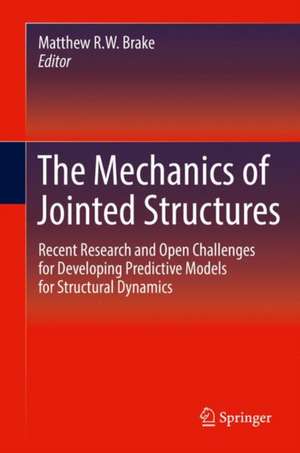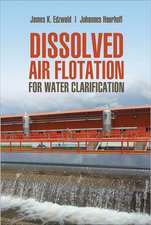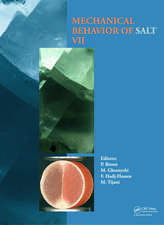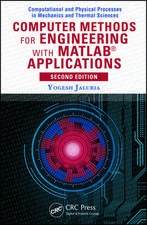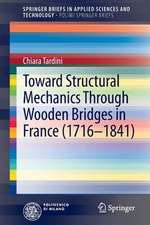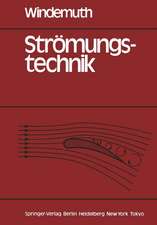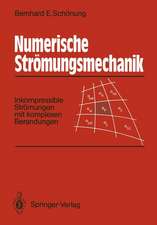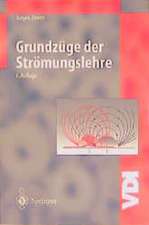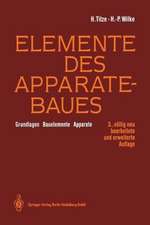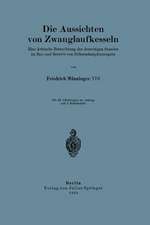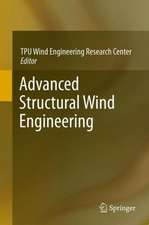The Mechanics of Jointed Structures: Recent Research and Open Challenges for Developing Predictive Models for Structural Dynamics
Editat de Matthew R.W. Brakeen Limba Engleză Hardback – 23 iul 2017
- Clearly defines internationally recognized challenges in joint mechanics/jointed structures and provides a comprehensive assessment of the state-of-the-art for joint modeling;
- Identifies open research questions facing joint mechanics;
- Details methodologies for accounting for uncertainties (due both to missing physics and variability) in joints;
- Explains and illustrates best-practices for measuring joints’ properties experimentally;
- Maximizes reader understanding of modeling joint dynamics with a comparison of multiple approaches.
| Toate formatele și edițiile | Preț | Express |
|---|---|---|
| Paperback (1) | 1321.57 lei 38-44 zile | |
| Springer International Publishing – aug 2018 | 1321.57 lei 38-44 zile | |
| Hardback (1) | 1575.07 lei 3-5 săpt. | |
| Springer International Publishing – 23 iul 2017 | 1575.07 lei 3-5 săpt. |
Preț: 1575.07 lei
Preț vechi: 1920.82 lei
-18% Nou
Puncte Express: 2363
Preț estimativ în valută:
301.42€ • 327.30$ • 253.20£
301.42€ • 327.30$ • 253.20£
Carte disponibilă
Livrare economică 02-16 aprilie
Preluare comenzi: 021 569.72.76
Specificații
ISBN-13: 9783319568164
ISBN-10: 3319568167
Pagini: 704
Ilustrații: XIII, 702 p. 352 illus., 261 illus. in color.
Dimensiuni: 155 x 235 mm
Greutate: 1.32 kg
Ediția:1st ed. 2018
Editura: Springer International Publishing
Colecția Springer
Locul publicării:Cham, Switzerland
ISBN-10: 3319568167
Pagini: 704
Ilustrații: XIII, 702 p. 352 illus., 261 illus. in color.
Dimensiuni: 155 x 235 mm
Greutate: 1.32 kg
Ediția:1st ed. 2018
Editura: Springer International Publishing
Colecția Springer
Locul publicării:Cham, Switzerland
Cuprins
Part 1: Perspectives on the Challenges of Joints Research.- Introduction to Research on the Mechanics of Jointed Structures.- An Overview of the Analysis of Jointed Structures.- Are Joints Necessary?.- Considerations for Defining the Mechanisms of Friction.- Part 2: Experimental Techniques for Studying Energy Dissipation Mechanisms.- Round Robin Systems.- The Gaul Resonator: Experiments for the Isolated Investigation of a Bolted Lap Joint.- The Cut Beam Benchmark System: Developing Measurement Techniques for Nonlinear Damping and Stiffness in Frictional Interfaces.- The Ampair 600 Wind Turbine: An In-Context Benchmark System.- The Brake-Reuß Beams: A System Designed for the Measurements and Modeling of Variability and Repeatability of Jointed Structures with Frictional Interfaces.- Considerations for Measurements of Jointed Structures.- Damping Due to Joints in Built-Up Structures.- A Survey of Contact Hysteresis Measurement Techniques.- Under-Platform Damper Measurements at Politecnico di Torino.- Part 3: Derivation of Constitutive Equations Based on Physical Parameters.- An Overview of Constitutive Models.- Assessment of Coulomb Friction in Modeling Joint Mechanics via a Parameter Study of Dissipation.- The Reduced Iwan Plus Pinning (RIPP) Joint Model.- Modal Iwan Models for Structures with Bolted Joints.- Constitutive Modeling of Contact for ElasticPlastic Materials Engaged in Micro/Macroslip.- Microslip Induced Damping in the Contact of Nominally Flat Surfaces with Geometric Defects.- Elements of a Nonlinear System Identification Methodology of Broad Applicability With Application to Bolted Joints.- Parameter Estimation via Instantaneous Frequency and Damping from Transient Ring-Down Data.- Part 4: Numerical Techniques for the Analysis of Jointed Structures.- Historical Perspective on Numerical Techniques for Modeling Joints.- A Standard Practice for Modeling Bolted Joints in a Finite Element Package.- Reduced Order Modeling of Nonlinear Structures with Frictional Interfaces.- The Craig-Mayes Reduction: A Craig-Bampton Experimental Dynamic Substructure using the Transmission Simulator Method.- A Comparison of Reduced Order Modeling Techniques Used in Dynamic Substructuring.- Calculating the Dynamic Response of Jointed Structures in the Frequency Domain using Contact Interface Elements.- Application of Continuum Shell Models for Joint Dissipation.- Nonlinear Modal Analysis and Modal Reduction of Jointed Structures.- Numerical Methods for Assessing Response Metrics.- Predicting the Shakedown Limits of Joints Subject to Fretting and High Cycle Fatigue.- Part 5: Epistemic and Aleatoric Uncertainty in Modeling and Measurements.- A Primer for Uncertainty Modeling in Jointed Structures.- Epistemic and Aleatoric Uncertainty in Modeling.- A Practical Application of a Maximum Entropy, Non-Parametric Approach to Account for Epistemic Uncertainty Using Random Matrices.- Stochastic Iwan-Type Models for Joint Variability Modeling.- Quantifying-Epistemic and Aleatoric Uncertainty in the Ampair 600 Wind Turbine.- Part 6: Perspectives on the Future of Joints Research.- The Next Generation of Joints Research.
Textul de pe ultima copertă
This book introduces the challenges inherent in jointed structures and guides researchers to the still-open, pressing challenges that need to be solved to advance this critical field. The authors cover multiple facets of interfacial mechanics that pertain to jointed structures: tribological modeling and measurements of the interface surfaces, constitutive modeling of joints, numerical reduction techniques for structures with joints, and uncertainty quantification and propagation for these structures. Thus, the key subspecialties addressed are model reduction for nonlinear systems, uncertainty quantification, constitutive modeling of joints, and measurements of interfacial mechanics properties (including tribology). The diverse contributions to this volume fill a much needed void in the literature and present to a new generation of joints researchers the potential challenges that they can engage in in order to advance the state of the art.
- Clearly defines internationally recognized challenges in joint mechanics/jointed structures and provides a comprehensive assessment of the state-of-the-art for joint modeling;
- Identifies open research questions facing joint mechanics;
- Details methodologies for accounting for uncertainties (due both to missing physics and variability) in joints;
- Explains and illustrates best-practices for measuring joints’ properties experimentally;
- Maximizes reader understanding of modeling joint dynamics with a comparison of multiple approaches.
Caracteristici
Clearly defines internationally recognized challenges in joint mechanics/jointed structures and provides a comprehensive assessment of the state-of-the-art for joint modeling
Identifies open research questions facing joint mechanics
Details methodologies for accounting for uncertainties (due both to missing physics and variability) in joints
Explains and illustrates best-practices for measuring joints’ properties experimentally
Maximizes reader understanding of modeling joint dynamics with a comparison of multiple approaches
Includes supplementary material: sn.pub/extras
Identifies open research questions facing joint mechanics
Details methodologies for accounting for uncertainties (due both to missing physics and variability) in joints
Explains and illustrates best-practices for measuring joints’ properties experimentally
Maximizes reader understanding of modeling joint dynamics with a comparison of multiple approaches
Includes supplementary material: sn.pub/extras
